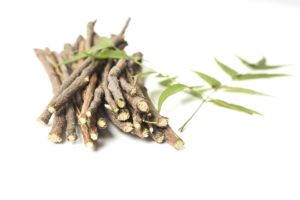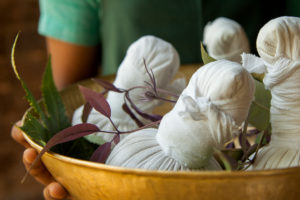
Cholesterol
|
Ayurvedic Case Studies & Insight On Cholesterol Balancing
Cholesterol is the waxy fat-like substance found in all the cells of the body. Our body requires cholesterol to form hormones, vitamin D, and substances helping in digestion of foods. Fatty cholesterol does not mix with blood and is carried in small packages called lipoproteins. These lipoproteins are further classified as follows:
- Low-density lipoprotein (LDL) cholesterol also known as bad cholesterol – These can cling to arterial walls and create blockages that result in strokes and heart attacks.High-density lipoprotein (HDL) cholesterol also called good cholesterol – HDL cholesterol carries the cholesterol from other parts of the body to the liver which removes it from the body.
- Higher LDL levels increases chances of getting heart disease while higher HDL levels lower them.
What Is The Harm?
- Saturated fat in food increases body LDL cholesterol levels.
- Also being overweight can raise LDL levels and lowers HDL levels increasing the total cholesterol level.
- In Atherosclerosis, a plaque is formed by the accumulation of the cholesterol on the walls of the arteries leading into narrowing and hardening of the arteries. The narrowing of the coronary arteries results in decrease in the oxygenated blood supply to the body finally resulting into Coronary Artery Disease (CAD).
Ayurveda Understanding Of Cholesterol
Ayurveda discusses Medha dhatu (lipid tissue) and explains how healthy quantity and quality of fat tissue in the body is maintained. When Medha dhatu is balanced and healthy, that subsequently helps to maintain balanced cholesterol. Whereas, when the production of Medha dhatu is disturbed, the quantity (amount and proportion) and quality (contents) of Medha dhatu are also disturbed. This further results into raising the Cholesterol level and also increasing the LDL. Ayurveda specifically enlightens about the need of balancing the cholesterol which is regarded necessary for the optimum nourishment of body tissues.
Ayurvedic Herbs For High Cholesterol
Ayurveda remedies and Ayurvedic treatments are good support for not only providing aid in decreasing the high levels of serum cholesterol, but also benefit to prevent the production of bad cholesterol or the LDL.
In Ayurveda, certain herbs, treatments and remedies can help in lowering the high LDL cholesterol levels.
Garlic:
It is believed that Garlic cloves helps to break down the bad LDL cholesterol and release it from the arterial walls.
Coriander:
Coriander has diuretic property that flushes out body waste and also the excess cholesterol. As a home remedy, you may boil one glassful of water with two teaspoon coriander seed. Strain and drink this water twice daily. It helps reduce cholesterol, flushes out toxins and also improves digestion.
Holy Basil:
The herb of Holy Basil or Tulsi disintegrates cholesterol from the arteries and washes it from the body.
Guggul:
Guggul is a sap extracted from the Mukul myrrh tree. Guggulu (Commiphora mukul) is effective in lowering cholesterol.
Arjuna:
The medicinal properties of Arjuna’s white bark helps in dissolving cholesterol from the arteries. This is believed to be rich in co-enzyme Q-10 (CoQ10) that helps lower LDL cholesterol and enhances HDL or the good cholesterol.
Ayurvedic Panchakarma Therapies For Balancing Cholesterol
Ayurvedic treatments of Panchakarma are great help for bringing reasonable decrease in the cholesterol mainly by lowering toxic lipid peroxide levels. At the same time, aids in significantly nurturing the good HDL cholesterol.
Ayurvedic Case Studies on High Cholesterol
Case Study – 1.
- A single blinded controlled study has been conducted on 45 patients (aged between 18-60 years of both sexes presenting with hyperlipidaemia – increase of all types of lipids), attending O.P.D and I.P.D of Sri Jayachamarajendra Institute of Indian medicine, Bangalore, randomized in to three groups each containing 15 patients. The control drug was atrovastin. Anuvasana basti alone was administered on first and last three days. Alternative administration of Nirooha and Anuvasana basti performed from second day to seventh day. Nirooha Basti was administered in empty stomach. After basti Pratyagamana (expulsion of Basti Dravya), Laghu Aahara (light food) was given for consumption and immediately Anuvasana Basti was administered. Average mean reduction of lipids were found statistically significant (p<0.05) in the experimental groups over control group in all types of lipids except HDL which has presented increase pattern. Hence the study establishes the efficacy of Aushakadi Lekhana Basti in hyperlipidaemia of obese and non-obese patients.
Case Study – 2.
- Research cited was done on Maharishi Ayurveda – Dr. Douilard co-directed the Maharishi Physicians Training Program for eight years and received much of his early training in the Maharishi Ayurveda school of panchakarma. The panchakarma was investigated for its effect on cardiovascular risk factors. PK was given for three to five days to 31 subjects (15 male and 16 female). Fasting blood samples were tested for various biochemical parameters before, during, one week after, and 2.9 months after Panchakarma. Results showed improvement in several cardiovascular risk factors. Lipid peroxide (LP) levels rose during PK, then fell at 2.9 months to levels lower that the original levels (p=0.023). The transient rise in blood stream levels of LP may be due to an exchange of peroxidized cell membrane lipids for undamaged lipids present in ghee and sesame oil. Both sesame oil and ghee contain linoleic acid, an important structural lipid in the cell membrane, which also serves as the substrate for other structural lipids. The massage that is a part of Panchakarma may accelerate this exchange process, possibly by the activation of phospholipase A2. As the peroxidized lipids are removed from the body by the extraction and elimination procedures of Panchakarma, the levels of LP should ultimately decrease, which is what this study confirmed.
Case Study – 3.
- The placebo-controlled randomized clinical study of Mustadi Ghanavati was carried out on 61 patients (aged between 40-50 years) suffering from hyperlipidemia (50 completed the entire course of treatment). The study was conducted at the OPD and IPD of the Department of Kayachikitsa, Institute for Post Graduate Teaching and Research in Ayurveda Hospital, Jamnagar, Gujarat, were selected for the present study irrespective of age, sex, religion, etc. The results of the study revealed that Mustadi Ghanavati decreased serum cholesterol by 22.4%, serum triglycerides by 19.6%, serum LDL by 18.2%, and serum VLDL by 4.2%; serum HDL increased by 5.6%. Thus Mustadi Ghanavati was able to effect a total improvement of 58.8% in the lipid profile. It brought about mild improvement in 42.86% of patients and moderate improvement in 14.28% of patients. Mustadi Ghanavati was also found to have a significant effect on other subjective as well as objective parameters considered for the study. Hyperlipidemia can be treated on the principles of Apatarpana and by following the line of treatment of Sthaulya or Prameha since all the three arise due to Medo Dushti. Mustadi Ghanavati showed a better result on all the subjective and objective parameters than placebo. Dietary and lifestyle changes are supportive to therapy in hyperlipidaemia and obesity.
About the Author:
Dr Sonica Krishan is Author and Speaker in the areas of Healthy and Joyous Living through Ayurveda, Meditation, Yoga and other Contemplative practices. She is a leading Ayurveda Professional in India. She is also Health Writer, Columnist, Editor, Ayurveda Consultant and Holistic Healing Coach. Dr Sonica is open for National as well as International Collaborations with interested people / institutions in fields of Ayurveda, Meditation and Yoga.
Dr Sonica Krishan’s Books are available at Amazon
Related Posts:
Ayurvedic Insight and Case Studies on Diabetes
Ayurvedic Case Studies on Digestion Disorders



I believe you have mentioned some very interesting details, regards for the post. Keep us reading